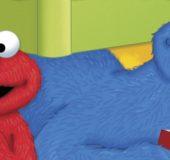Chapter One
The Delta
1936–1949
Deer Creek winds casually, almost lazily, through the muggy lowlands in the heart of the Mississippi Delta. Its point of origin—near the little town of Scott, in Bolivar County—lies roughly ninety miles north of its terminal point at the Yazoo River three counties away. But Deer Creek takes its time getting there, looping and whorling back and forth in a two-hundred-mile-long amble, looking like a child’s cursive scrawled across the map.
The town of Leland, Mississippi, straddles Deer Creek just as it twists into one of its first tight hairpin turns, about ten miles east of Greenville. Established before the Civil War, the sleepy settlement, sprawled out across several former plantations, had taken advantage of fertile soil and regular steamboat traffic on Deer Creek to become one of the wealthiest in the Delta region. In the 1880s came the Yazoo and Mississippi Valley Railroad, along with an influx of grocers and landlords and innkeepers—but even with the growing merchant class and increasing gentrification, it was still land that mattered most in Leland, and in the Mississippi Delta. In 1904, then, the state legislature called for the creation of an agricultural experiment station in the Delta region, preferably “at a point where experiments with the soil of the hills as well as the Delta can be made.” That point turned out to be two hundred acres of land hugging Deer Creek, in the village of Stoneville, putting the state’s new Delta Branch Experiment Station just north of—and practically butted up against—Leland. By 1918, the facility in Stoneville was housing researchers and their families from the U.S. Department of Agriculture, carrying out research on crops, soil, and animal production for the federal government; by 1930, its findings on animal feed and insect control were particularly welcome to planters and sharecroppers doing their best to scratch out a living from the swampy Delta soil during the Great Depression.
Paul Ransom Henson—Jim Henson’s father—was neither a planter nor a sharecropper. Nor had he come to the Delta region to work a family farm during the Depression or satisfy a random pang of wanderlust. Paul Henson was a practical man, and he had come to Leland in 1931 with his new wife, Betty, for a practical reason: he had accepted a government post at the Delta Branch Experiment Station in Stoneville.
Paul Henson came from a line of similarly sturdy and clear-minded men who sought neither to offend nor agitate, a trait that Paul’s famous son would inherit as well—and, in fact, Jim Henson would always be very proud of his father’s rugged, even-tempered Midwestern lineage. On one side of his father’s family were the Dolton and Barnes lines—good-natured, nonconfrontational, and accommodating almost to a fault—while on the other were the Hensons—practical, rugged, and imperturbable.
One of Jim’s favorite family stories involved his great-great-grandfather, a strongly pro-Northern farmer named Richmond Dolton who, during the Civil War, had been living in a small Missouri town in which most of the residents were Southern sympathizers. Rather than offend the Confederate sensibilities of his neighbors, the amiable Dolton simply swapped his farm—in a typically equitable and businesslike exchange—for a similar one in a town in Kansas where the residents shared his own Union tendencies. The move would come to be particularly appreciated by Dolton’s teenage daughter, Aramentia, though for reasons more prurient than political—for it was here in Kansas that Aramentia Dolton met Ransom Aaron Barnes, a New Jersey native who had settled in the area. In 1869, she and Barnes were married; less than a year later, they would have a daughter, Effie Carrie Barnes—Paul Henson’s mother.
On the Henson side, Jim could trace his pedigree back to colonial-era farmers in North Carolina whose descendants had slowly pushed west with the expanding American frontier, setting up farms and raising families in Kentucky and Kansas. One of those descendants was Jim’s paternal grandfather, a sturdy Kansas farmer named Albert Gordon Henson, who, in 1889, had married Richmond Dolton’s levelheaded granddaughter, Effie Carrie Barnes. After an ambitious though unsuccessful effort to stake a claim during the Cherokee Strip land run—where he had rumbled into the dusty Oklahoma countryside in a mule-drawn buckboard—Albert and Effie would eventually settle in Lincoln County, just east of Oklahoma City. It was here that Paul Ransom Henson—the name Ransom was borrowed from Effie’s father, Ransom Aaron Barnes—would be born in 1904, the youngest of Albert and Effie’s nine children.
Each morning, Paul Henson would be awakened at first light to do his chores and walk the half mile to school, a one-room building crammed with fifty children and presided over by two teachers. While Albert Henson never had much formal schooling, he was determined to make education a priority for the children in the Henson household. With that sort of parental encouragement, Paul graduated from high school in 1924 at age nineteen, and immediately headed for Iowa State College—now Iowa State University, a school recognized then, as now, for the quality of its agricultural programs. Over the next four years, Paul was a member of the agriculture-oriented Alpha Gamma Rho fraternity, participated on the Farm Crops Judging Team (the team would place third nationally in 1927), and even discovered a knack for performance as a member of the Dramatic Club. In July 1928, he received his BS in Farm Crops and Soils, completing a thesis on the hybridization of soybeans.
Following graduation, Paul began work on his master’s degree at the University of Maryland, enrolling in courses covering plant physics, biochemistry, genetics, statistics, agronomy, and soil technology. One afternoon, while eating his lunch, he caught sight of an attractive young woman walking toward the campus restaurant—when pressed, he would later admit his eyes had been drawn mainly to her legs—and was determined to win an introduction. The legs, as it turned out, belonged to Elizabeth Brown—Betty, as everyone called her—the twenty-one-year-old secretary to Harry Patterson, dean of the College of Agriculture.
Elizabeth Marcella Brown was born in Washington, D.C., and raised in Maryland, but had lived in Memphis and New Orleans long enough to pick up both the lilting accent and genteel demeanor of a Southern belle. The accent and the manners were fitting, for Betty had a refined, distinctly Southern, and generally artistic pedigree. In fact, it was through Betty’s side of the family that Jim Henson could trace his artistic ability, in a straight and colorful line running through his mother and grandmother back to his maternal great-grandfather, a talented Civil War–era mapmaker named Oscar.
Oscar Hinrichs—a swaggering Prussian who had immigrated to the United States in 1837 at the age of two—began working as a cartographer for the United States Coast Survey at age twenty-one, reporting directly to Alexander Dallas Bache, head of the survey and a great-grandson of Benjamin Franklin. When the Civil War began in 1860, Oscar enthusiastically enlisted with the Confederacy—even smuggling himself into the South with the help of Confederate sympathizers in Maryland—and loaned his valuable mapmaking skills to the Southern cause even as he survived battles at Antietam, Gettysburg, and the Wilderness. After the war, Oscar married Marylander Mary Stanley—whose father had helped him sneak into the Confederacy—and moved to New York City. Over the next ten years, Mary bore Oscar six children, including one daughter, Sarah—Betty Brown’s mother, and Jim Henson’s grandmother. It was Sarah who inherited Oscar Hinrichs’s innate artistic streak, and she would learn not only how to paint and draw, but also how to sew, carve, and use hand tools—talents that Jim Henson would wield just as skillfully two generations later as he sketched, carved, and sewed his earliest Muppets.
The Hinrichs family eventually settled in Washington, where Oscar unhappily bounced between jobs, convinced employers were discriminating against him because of his service to the Confederacy. Compounding his misery, Mary became ill with uterine cancer and died in 1891 at the age of fifty-two. Less than a year later, a grief-stricken Oscar Hinrichs took his own life, leaving an orphaned fourteen-year-old Sarah to tend to two younger brothers. Dutifully, Sarah dropped out of the art school into which she had just been accepted and moved with her brothers into a Washington boardinghouse. For the rest of their lives, neither Sarah nor her siblings openly discussed Oscar Hinrichs’s sad demise—a penchant for maintaining a respectful silence about unhappy circumstances that her grandson Jim Henson would also share.
In 1902, twenty-four-year-old Sarah Hinrichs was introduced to Maury Brown, a lanky, thirty-four-year-old clerk and stenographer for Southern Railway. Born in Kentucky on the day after Christmas in 1868, Maury Heady Brown—Jim Henson’s grandfather—was a self-made man with a rugged Southern determination. Raised by a single mother who was totally deaf, Brown had run away from home at age ten and learned to use the telegraph, supporting himself by reporting horse-racing scores for a Lexington racetrack. A voracious reader and quick learner, he next taught himself typewriting and shorthand, eventually becoming so proficient at both that he was hired as the full-time private secretary to the president of Southern Railway. When he met Sarah Hinrichs in the winter of 1902, Brown fell in love immediately—and on their second date, as they ice skated on the frozen Potomac River, Maury Brown presented Sarah Hinrichs with an armful of red roses and asked for her hand. While the newspapers in 1903 may have noted the marriage of Maury and Sarah Brown, to each other—and to the rest of the family—they would always be “Pop” and “Dear.”
For the next few years, Pop and Dear bounced around with the Southern Railway, landing briefly in Missouri, Washington, Memphis, and New Orleans, and all while raising three daughters, Mary Agnes, Elizabeth, and Barbara—better known as Attie, Betty, and Bobby. Perhaps because they moved around so often, the Browns were an exceptionally close and good-natured family. “I just thought we had the happiest home that ever was,” Bobby said later. “And I remember what a shock it was when I would go to other people’s houses to sleep over and found out that all families weren’t as fun and nice to each other as ours!”
At some point in his youth, Maury Brown embraced Christian Science, a relatively new faith that had been formally established in 1879. Consequently, the daughters were all brought up as Christian Scientists, though moderate in their practice, likely through the influence of Dear. While the daughters might forgo most medical care in favor of prayer or homeopathic treatments—as a girl, Betty was dunked in alternating hot and cold water baths to combat a case of whooping cough—more serious injuries were almost always attended to by physicians. When Attie was badly hurt in a car accident one winter, the family immediately called for a doctor—and far from being concerned about compromising her faith, Attie remembered being more embarrassed that the doctor had to cut away her long underwear to set her broken leg.
Eventually, the Browns returned to the D.C. area for good, living first in a “perfectly awful” place near the railroad tracks in Hyattsville, Maryland—the house would shake violently as trains roared past—before settling into the much quieter Marion Street in 1923. Attie and Betty were expected to help pay the mortgage each month, and shortly after high school both found work as secretaries—Attie at an express company, and Betty at the nearby University of Maryland, where she, and her legs, soon caught the eye of Paul Henson.
Paul would woo Betty for the better part of two years, studying genetics and plant biology at the university during the week and attending regular tennis parties hosted by the Browns on weekends—and Paul quickly came to adore not just Betty, but the entire Brown family. It was easy to see why; Dear and Pop were devoted to each other, while the girls, both then and later, had distinct, almost Dickensian, personalities. Attie was the serious and straitlaced one and became a devoted Episcopalian. Betty was considered practical and no-nonsense, though she could show flashes of a slightly silly sense of humor, while Bobby was the happy-go-lucky one who worked to ensure that everything was “upbeat all the time.” All three, too, were excellent tennis players, having been taught to play at a young age by their dashing Uncle Fritz Hinrichs, who also taught the girls to dance. Attie later admitted she “could’ve cared less” about tennis, but the parties kept the Browns in the center of a wide social circle, and their names on the society pages of The Washington Post.
Copyright © 2013 by Brian Jay Jones. All rights reserved. No part of this excerpt may be reproduced or reprinted without permission in writing from the publisher.







